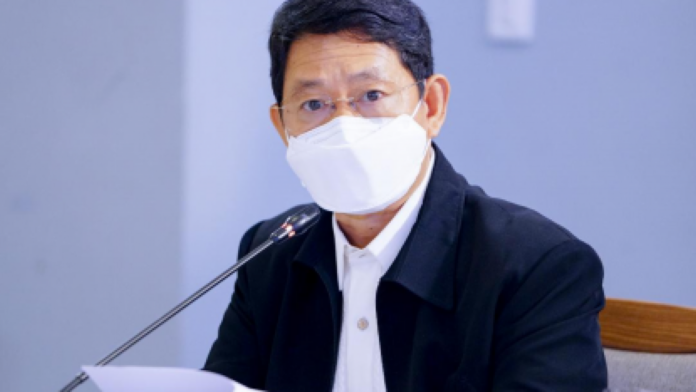The Department of the Interior and Local Government (DILG) urged local government units (LGUs) to improve their management of municipal waters and even assured them of its support in protecting municipal waters and local aquatic resources in the West Philippine Sea (WPS), particularly in strengthening law enforcement against illegal, unreported, and unregulated fishing.
DILG Secretary Eduardo M. Año said based on the results of the Department’s Fisheries Compliance Audit (FishCA), which monitors the LGUs’ enforcement of and compliance with Republic Act 8550 or the Philippine Fisheries Code of 1998, LGUs need to continuously improve their management of municipal waters.
He said for instance, some of the DILG’s partner non-government organizations (NGOs) have reported a high incidence of possible encroachments of commercial fishing vessels in municipal waters through the use of Visible Infrared Imaging Radiometer Suite (VIIRS) technology.
He said since LGUs are “at the forefront of ensuring food security, especially during the time of the pandemic,” the Department is committed to capacitate coastal LGUs for transparent and participatory management of municipal waters, in compliance with national fisheries laws.
“This enables LGUs to ensure sufficient local food supply sourced from municipal waters, manage their local food supply chains and bring markets closer to people, and ensure the continued livelihood of fisherfolk and other communities benefitting from local aquatic resources,” he said a news release on Sunday.
Año also said there is a need to establish harvest control rules (HCR) and other measures that the LGUs can use as reference in enforcing regulatory measures for the sustainable use of fishery resources.
The assessment of the quality of municipal water resources and establishment of fish catch documentation, he said, will further allow LGUs to monitor the abundance or depletion of their resources.
Año said municipal fishers also need technical and capacity assistance on sustainable fishing practices as well as upgrading of vessels and equipment.
Implementing the Fisheries Code
Meanwhile, lawyer Odilon L. Pasaraba, Assistant Secretary for Special Concerns-Local Government Sector Atty. Odilon shared how the DILG enjoins LGUs to sustain the performance of its mandates under the Fisheries Code.
He said the Department continues to enhance FishCA through a validation procedure that will be undertaken in cooperation with various government agencies such as the Department of Agriculture-Bureau of Fisheries and Aquatic Resources, Department of the Environment and Natural Resources, and partner non-government organizations (NGOs).
“This has already been pilot-tested in the Manila Bay area and is currently being assessed or studied if it can be implemented nationwide,” he said during the recent Presidential Communications Operations Office’s Virtual Presser with the National Task Force for the WPS.
Pasaraba said the DILG continues to enjoin LGUs to mainstream coastal resource management in their local development plans that will map and guide the LGUs on their commitments to the management of municipal waters based on their technical and institutional capacity.
“The management of municipal waters is vital in food security and ensuring the livelihood of small scale fishers and sustainable use of resources for the succeeding generations,” Pasaraba said.
According to the Philippine Fisheries Code, “municipal waters” include not only streams, lakes, inland bodies of water and tidal waters within the municipality which are not included within the protected areas as defined under RA 7586 or the National Integrated Protected Areas System Act, public forest, timber lands, forest reserves or fishery reserves, but also marine waters included between two lines drawn perpendicular to the general coastline from points where the boundary lines of the municipality touch the sea at low tide and a third line parallel with the general coastline including offshore islands and 15 kilometers from such coastline. Where two municipalities are so situated on opposite shores that there are less than 30 kilometers of marine waters between them, the third line shall be equally distant from the opposite shore of the respective municipalities.
Administrative Order No. 29, series of 2012, ordered naming the WPS as those maritime areas on the western side of the Philippine archipelago. These areas include the Luzon Sea as well as the waters around, within and adjacent to the Kalayaan Island Group and Bajo De Masinloc, also known as Scarborough Shoal. (PNA)


